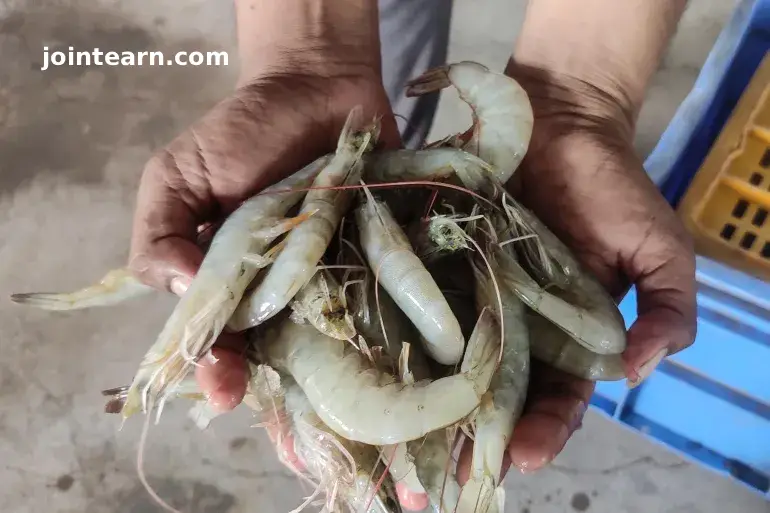
India, the world’s second-largest shrimp producer, is facing a serious threat to its thriving export industry due to high US tariffs imposed earlier this year. The tariffs, announced in May 2025, have sent shockwaves through India’s coastal farming communities, forcing shrimp farmers to take significant financial risks amid falling prices and rising costs.
Rising Risks for Shrimp Farmers
In Nandigram, West Bengal, shrimp farmer Buddhadeb Pradhan has taken the unusual step of cultivating a second shrimp crop within weeks of the first harvest. While this approach could increase output, it carries a high risk of disease—a common problem when multiple crops are harvested in a single year.
“The falling prices of shrimp have me stressing if I can recover my investment of 300,000 rupees [$3,380],” Pradhan told Al Jazeera.
Shrimp farmers across India are grappling with mounting costs, including land leases, feed, electricity, and labor. With production costs averaging 275 rupees ($3.10) per kilogram, current market prices of 230 rupees ($2.59) per kilogram are pushing many farmers toward financial losses.
India’s Shrimp Production: Key Facts
India produces two main commercial shrimp varieties:
- Vannamei (Pacific whiteleg shrimp) – accounting for the majority of production
- Black tiger shrimp – around 5% of total output
In the financial year ending March 2024, India produced 1.1 million tonnes of shrimp, with a significant portion exported to the United States, which accounts for nearly 48% of India’s shrimp exports.
India’s shrimp farming operates on two main cycles for vannamei shrimp—February to June and July to October—while black tiger shrimp is typically a single crop from March to August. The shrimp industry is concentrated in coastal states such as West Bengal, Gujarat, Odisha, Andhra Pradesh, Tamil Nadu, Goa, Maharashtra, Karnataka, and Kerala, employing nearly 10 million people across farming, hatcheries, and processing units.
Impact of US Tariffs
Since the implementation of tariffs, Indian shrimp prices have fallen sharply. Farmers like Nardu Das fear that continued price drops could force them into extreme measures to survive, highlighting the precarious nature of shrimp farming in India.
“Shrimp farming is expensive, and losses from disease or falling prices often push farmers to the brink of poverty,” Das explained.
Current US tariffs on Indian shrimp include:
- 58.26% overall tariff
- Countervailing duties: 5.77%
- Anti-dumping duties: 2.49%
These high tariffs make the US market increasingly unviable for Indian exporters, especially when competing against Ecuador, which exports shrimp to the US at significantly lower tariffs of 15%. Ecuador’s shrimp exports to the US increased 14% year-on-year in the first nine months of 2025, reaching over 1 million metric tonnes, worth $5.51 billion.
Challenges for Shrimp Hatcheries
India relies heavily on imported brood stock from the US to produce shrimp seeds. However, issues with seed quality and adaptability have resulted in disease outbreaks, leading to further losses.
India has around 550 private hatcheries, producing approximately 80 billion seeds annually. Many hatcheries are closing or halting production due to falling demand from farmers unable to absorb high costs.
“Undoubtedly, the US tariffs have begun to have a major impact on the hatcheries,” said Ravid Kumar Yellanki, president of the All India Shrimp Hatcheries Association.
Looking Ahead: Domestic Market Opportunities
Experts suggest that Indian shrimp exporters must diversify beyond the US market and explore the domestic Indian market, which remains largely untapped. Manoj Sharma, a senior aquaculture expert, noted:
“There is complete ignorance of the domestic market among exporters … and it has a lot of potential to absorb surplus production.”
Without swift intervention or tariff relief, India’s shrimp industry risks long-term losses, reduced employment, and shrinking global market share.
Key Takeaways
- India is the world’s second-largest shrimp producer, heavily reliant on US exports.
- US tariffs of over 58% are driving down prices and threatening farmer livelihoods.
- Shrimp hatcheries face declining demand and potential closures due to falling production.
- Ecuador’s cheaper, high-quality shrimp is capturing US market share, increasing competition.
- Experts recommend exploring the domestic Indian market to stabilize the industry.


Leave a Reply